Idea by
Ivan Bonev
Call for ideas 2021
Networks of De-institutional Architecture
Networks of De-institutional Architecture

- New alliances
The networks of de-institutional architecture were first found in Tokyo – where people live closely in neighborhoods like urban villages – as self-sustainable, non-institutional, resourcefully designed spaces for commonalities. These spaces were sometimes self-built, often self-initiated, and always self-governed within a community, or a company. This was a mark of independence from institutional influence and top-down programming. Thus, they have formed networks of urban ecologies of people and spaces, united by common activities. In a way, they are the urban vernacular architecture of today.
The importance of de-institutionalization of common spaces lays in the social quality they bring to urban space. They enable communities to establish their right to the city by independent spaces. Hence, the activities, which they make accessible, enable direct exchange of resources, knowledge, and ideas.
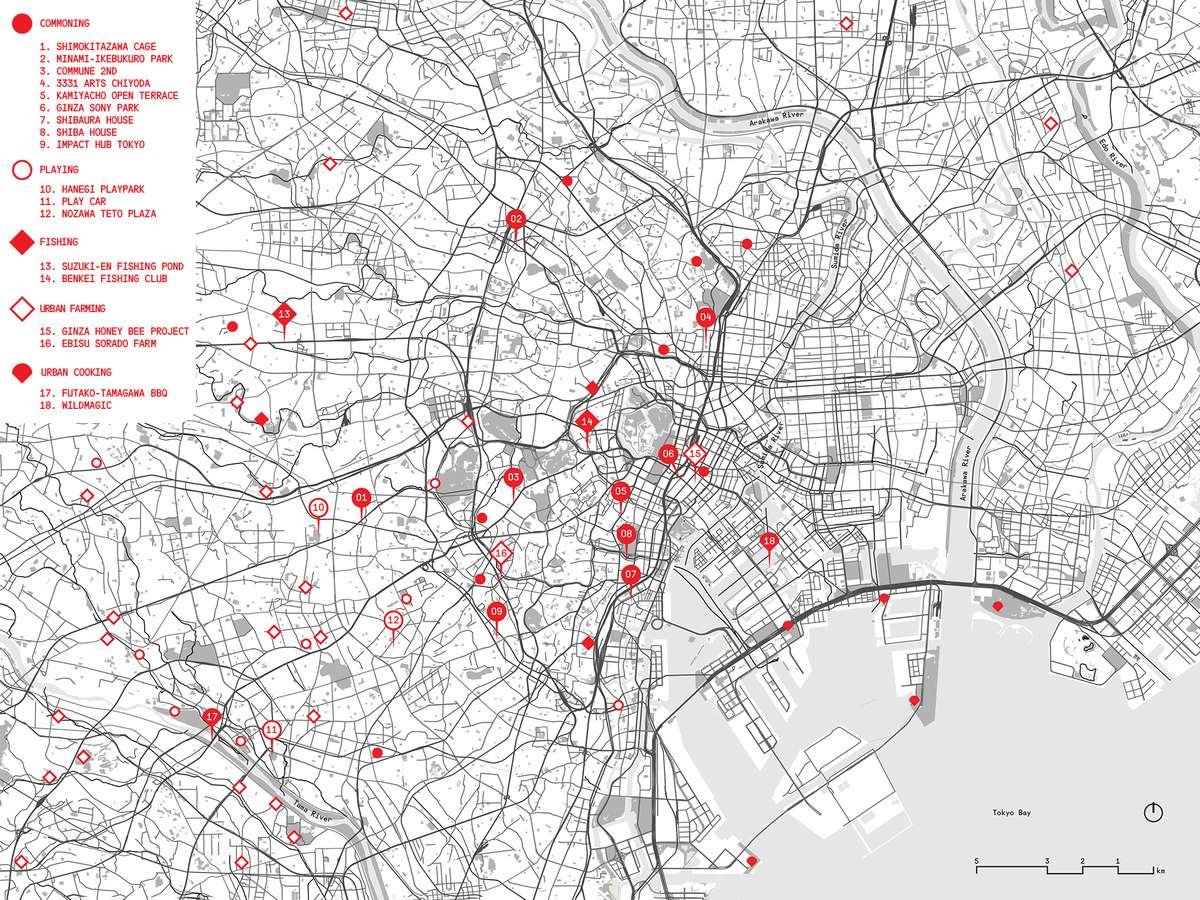
The networks of de-institutional architecture are formed around activities that reflect the contextual behaviors of people. In Tokyo, these are commoning, playing, fishing, urban farming, and urban cooking.
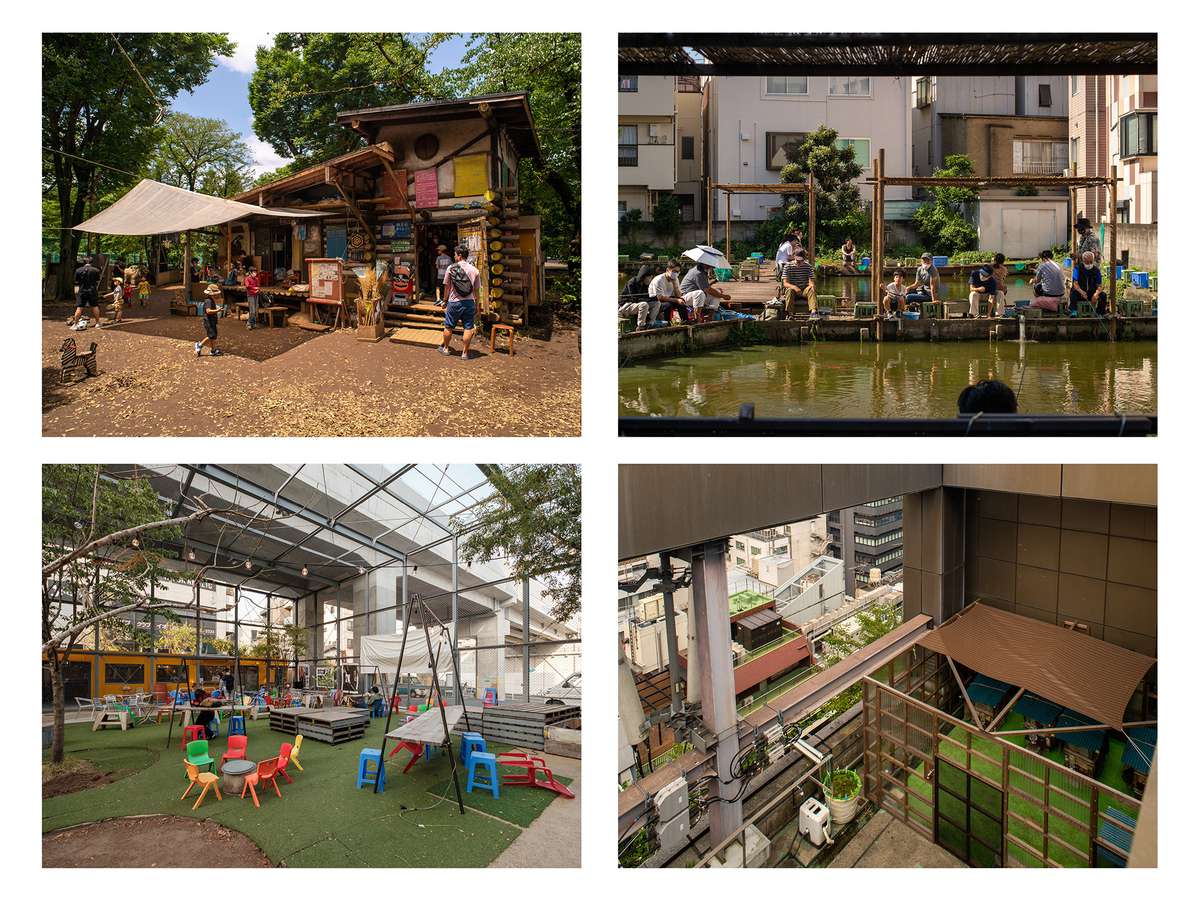
The design of de-institutional architecture depends on the community members' interests, needs, and capabilities. As such, it is stripped from ideology or affiliation to a certain style. It is a tool to deliver access to urban resources for the common benefit.
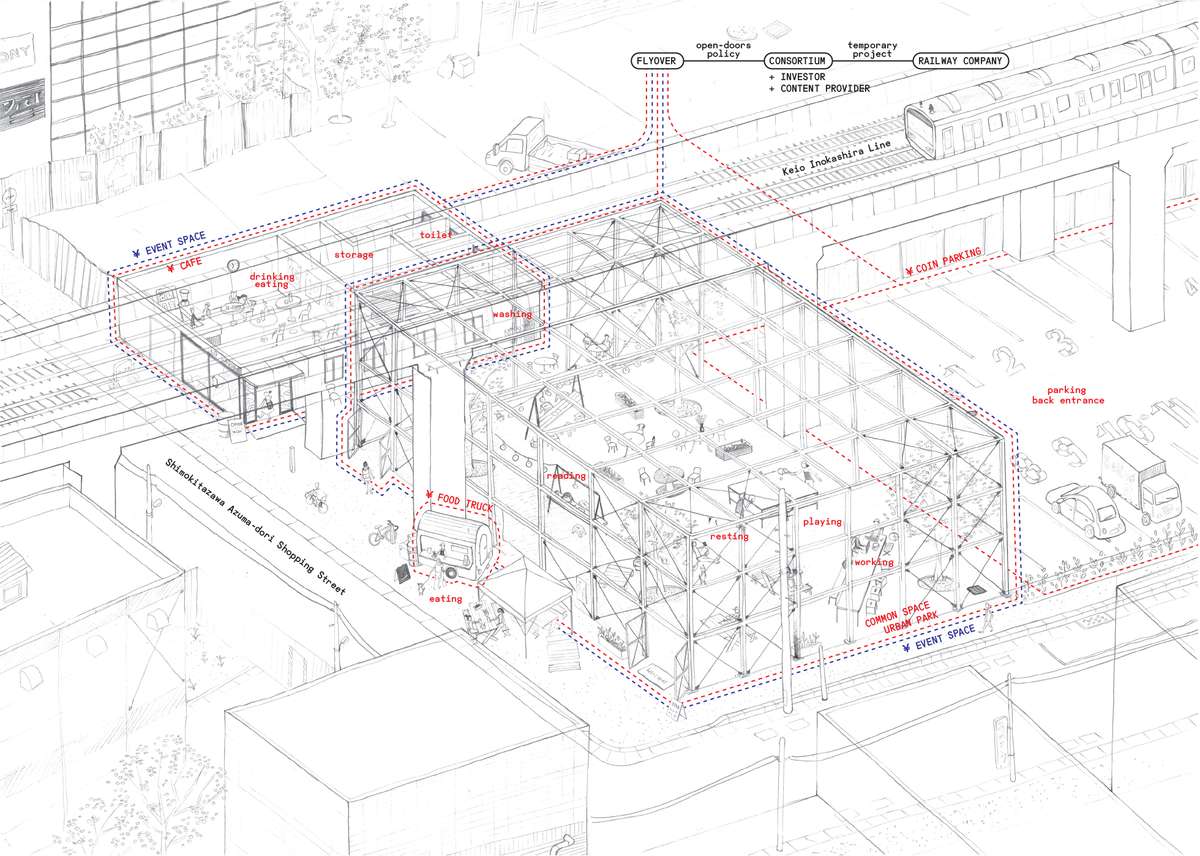
The governance of de-institutional architecture is negotiated between owners, managers, and members. It is crucial for the sustainable existence of such spaces because it defines the rights and responsibilities of all involved parties. It manages the relationship between the members, guests, and the city, and as a consequence – access and programming of common spaces.
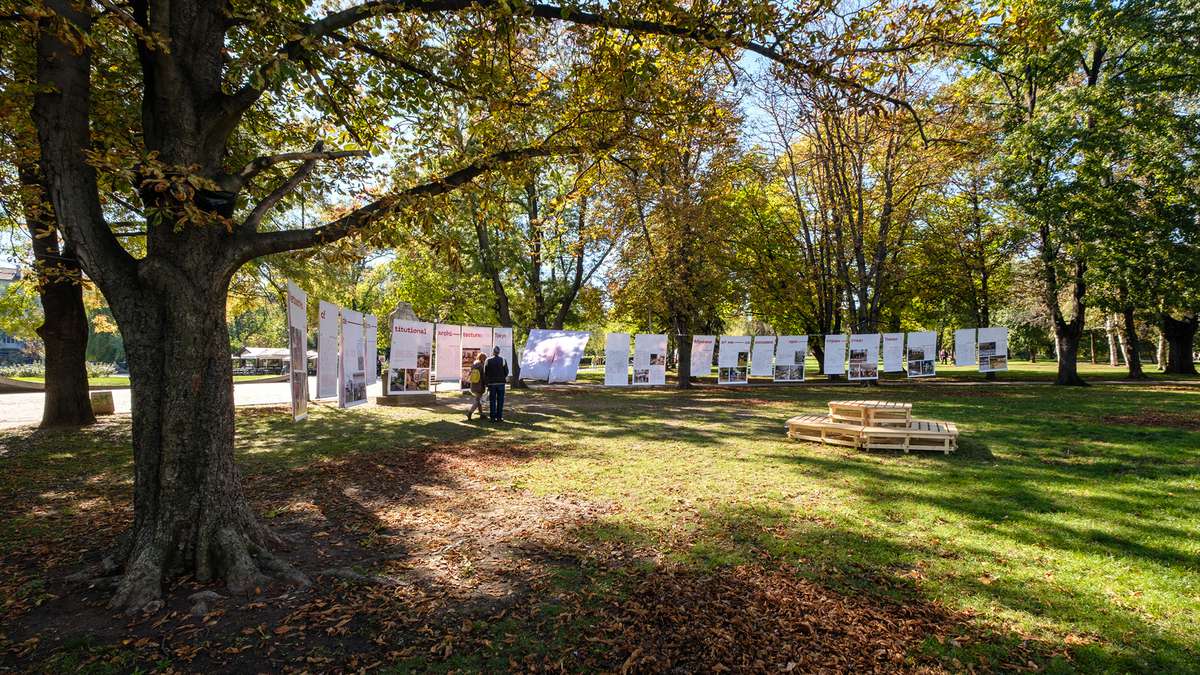
Networks of De-institutional Architecture: Tokyo was exhibited in Sofia in the autumn of 2020 as the outdoor installation Gallery without Walls during the 31st Days of Japanese Culture in Bulgaria. The installation reflected the qualities of de-institutional architectures – it resourcefully used the park environment and shaped a small space for gatherings of interested people while it lacked walls to invite guests.
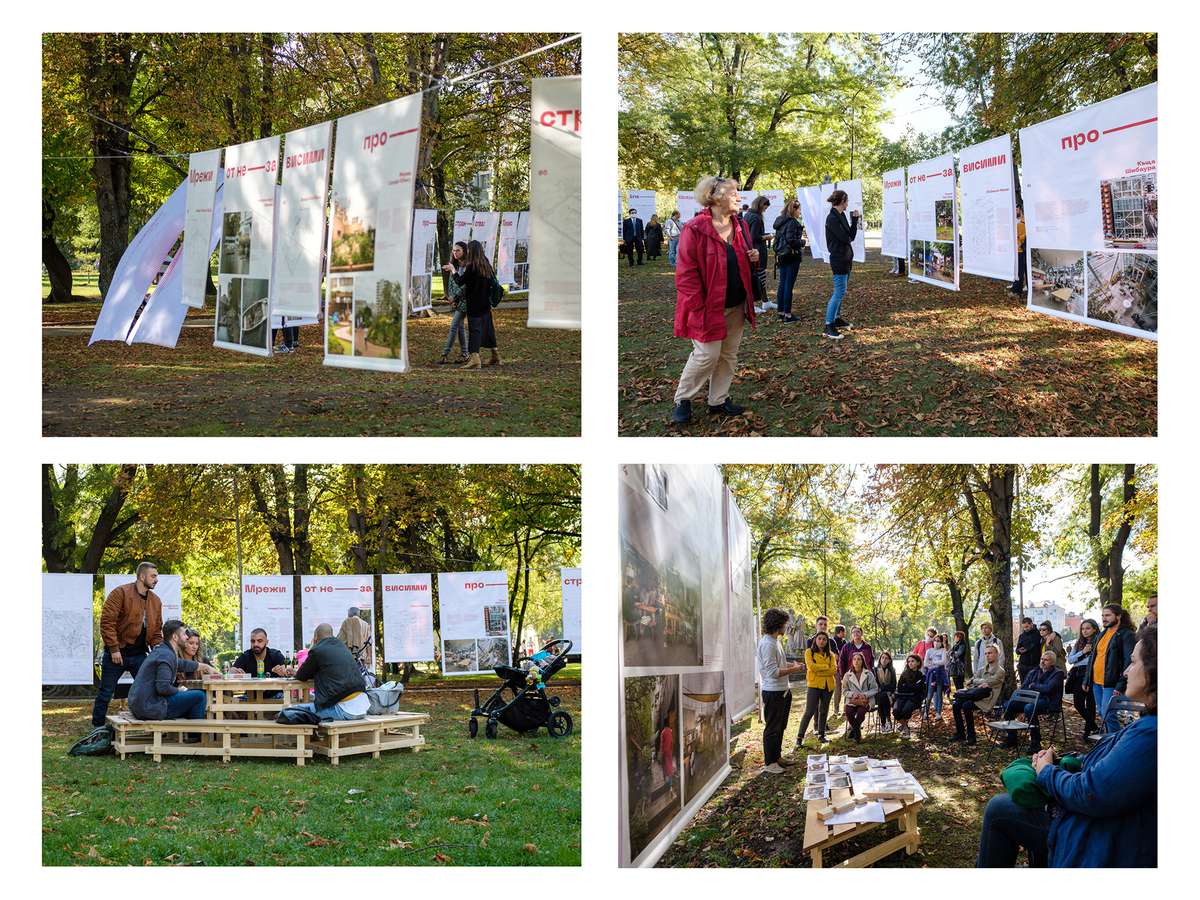
The design of the installation allowed for its flexible management in various situations – a six-sided bench was a place for contemplating the exhibition from distance. The bench exploded into segments, allowing people to use its inner table. The segments could be easily moved around for events.
Networks of De-institutional Architecture
Networks of De-institutional Architecture

- New alliances
The networks of de-institutional architecture were first found in Tokyo – where people live closely in neighborhoods like urban villages – as self-sustainable, non-institutional, resourcefully designed spaces for commonalities. These spaces were sometimes self-built, often self-initiated, and always self-governed within a community, or a company. This was a mark of independence from institutional influence and top-down programming. Thus, they have formed networks of urban ecologies of people and spaces, united by common activities. In a way, they are the urban vernacular architecture of today.
The importance of de-institutionalization of common spaces lays in the social quality they bring to urban space. They enable communities to establish their right to the city by independent spaces. Hence, the activities, which they make accessible, enable direct exchange of resources, knowledge, and ideas.
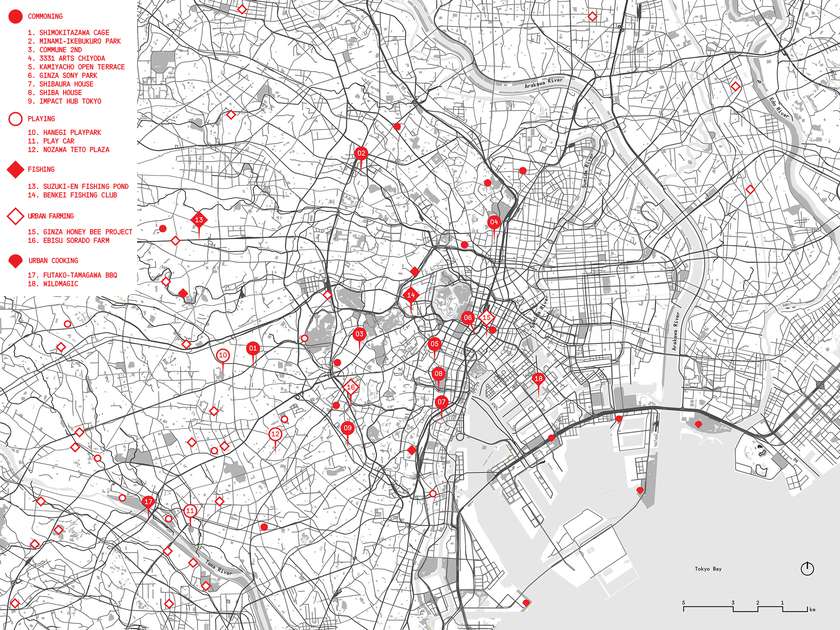
The networks of de-institutional architecture are formed around activities that reflect the contextual behaviors of people. In Tokyo, these are commoning, playing, fishing, urban farming, and urban cooking.
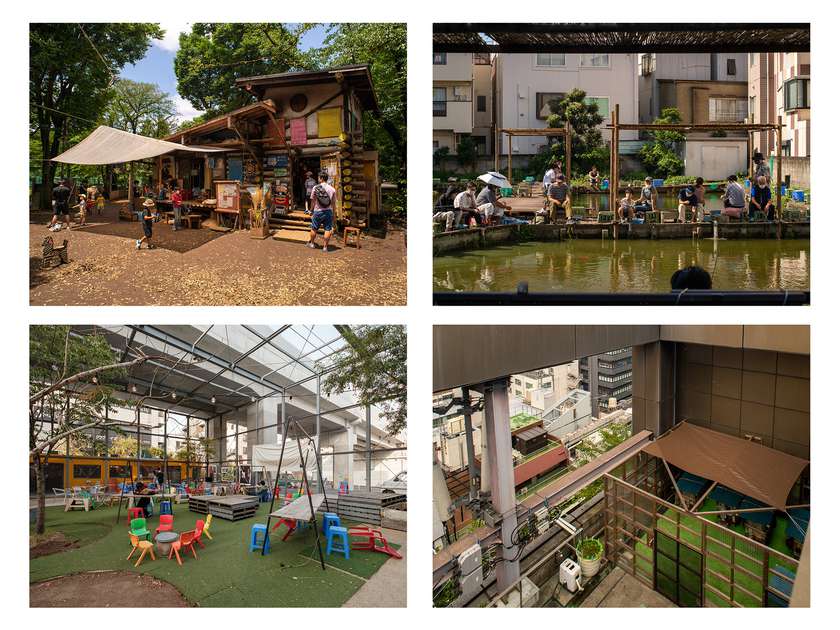
The design of de-institutional architecture depends on the community members' interests, needs, and capabilities. As such, it is stripped from ideology or affiliation to a certain style. It is a tool to deliver access to urban resources for the common benefit.
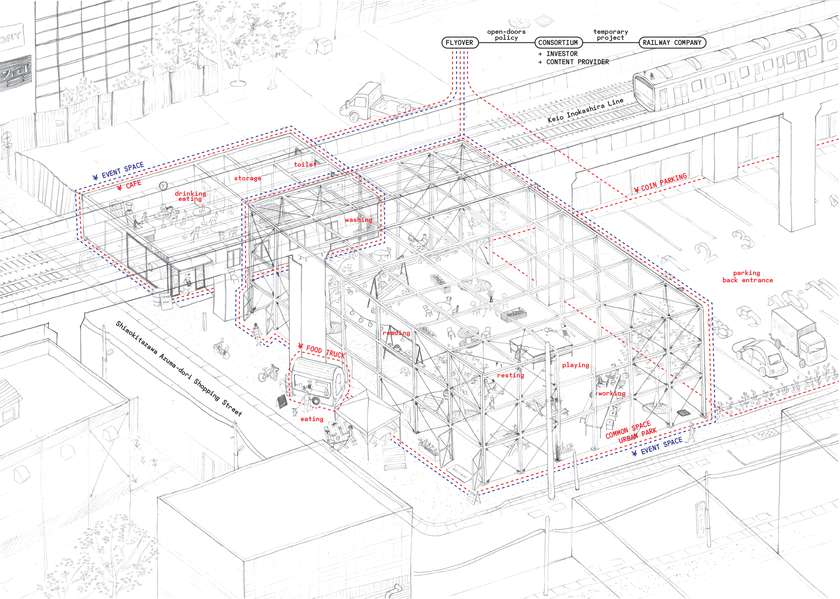
The governance of de-institutional architecture is negotiated between owners, managers, and members. It is crucial for the sustainable existence of such spaces because it defines the rights and responsibilities of all involved parties. It manages the relationship between the members, guests, and the city, and as a consequence – access and programming of common spaces.
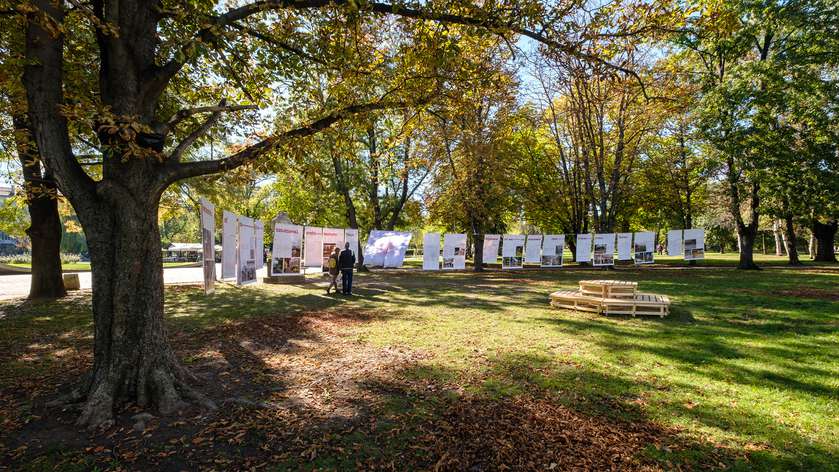
Networks of De-institutional Architecture: Tokyo was exhibited in Sofia in the autumn of 2020 as the outdoor installation Gallery without Walls during the 31st Days of Japanese Culture in Bulgaria. The installation reflected the qualities of de-institutional architectures – it resourcefully used the park environment and shaped a small space for gatherings of interested people while it lacked walls to invite guests.
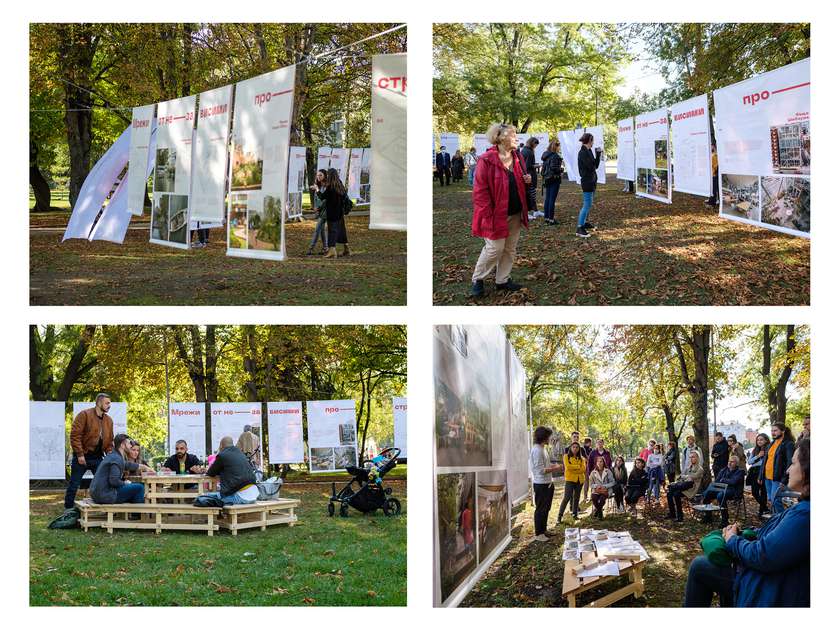
The design of the installation allowed for its flexible management in various situations – a six-sided bench was a place for contemplating the exhibition from distance. The bench exploded into segments, allowing people to use its inner table. The segments could be easily moved around for events.